I got really bored when the snow was falling. So decided to make food that you could play with.
Ingredients for Mozzarella Balloons
- 200 g Fresh Mozzarella (4 servings)
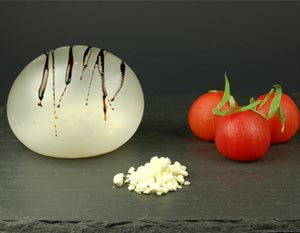 - 10 roasted garlic cloves
- 10 roasted garlic cloves
- balsamic vinegar reduction
- 12 peeled pearl tomatoes
- thinly sliced basil
- olive oil
- salt and pepper
Preparation
If the garlic cloves are not already roasted, wrapped them in aluminum foil with a few drops of olive oil and place them in the oven for 25 min 400 ˚F. Smash them and place them in the ISI Whip featured with the straight nozzle and charge it.
Boil 3 or 4 cups of water and set it aside in a container in which you can immerse the mozzarella pieces for each balloon without touching each other. Cut the mozzarella in pieces of 50 g (usually about half a mozzarella ball). Place them in the hot water to get them really soft and pliable. It may take about 5 to 10 minutes.
Remove one piece of hot mozzarella from the hot water; it should be hot and pliable, like gum. Knead it for 30 seconds to cool it down a little and then put it over the ISI Whip straight nozzle. Make sure the cheese is in one solid piece and does not have fold lines that are not completely fused together. Hold it tightly around the tip of the nose with your thumb and index fingers around it. Slowly start inflating it until desired size. Tight the bottom by squeezing the mozzarella with your two fingers as you slide the balloon out of the nozzle. Make sure the balloons don’t touch each other or they will stick.
Look carefully while inflating and stop if one section of the balloon is getting too translucent. If it breaks, don’t worry; just compact the mozzarella and place it in hot water again. or if you don't feel like making a ball again it tastes great as is.. Just a bit less fun to eat.
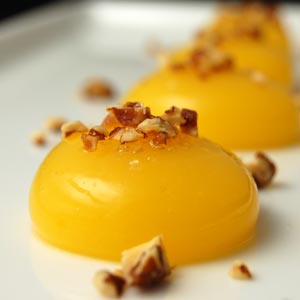
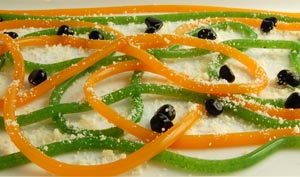
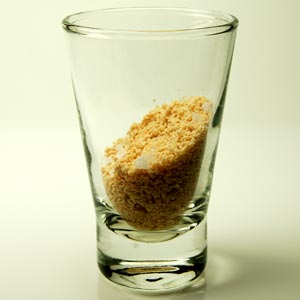 Ingredients for Dry Caramel with Salt (8 servings)
Ingredients for Dry Caramel with Salt (8 servings)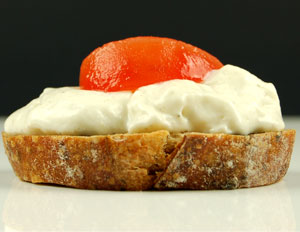 the mix will expand 2 or 3 times so you should season 2 or 3 times more than you would normally do.
the mix will expand 2 or 3 times so you should season 2 or 3 times more than you would normally do.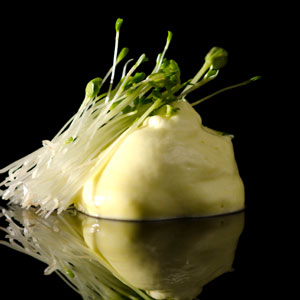 1- Heat the olive oil and glycerin flakes at low temperature until they reach a temperature of 140 °F
1- Heat the olive oil and glycerin flakes at low temperature until they reach a temperature of 140 °F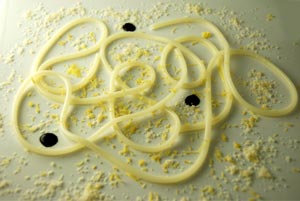

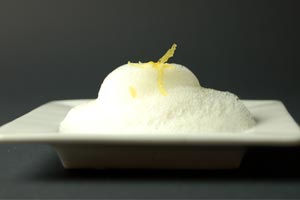


 - 750 g (1lb 10.5 oz) water
- 750 g (1lb 10.5 oz) water

